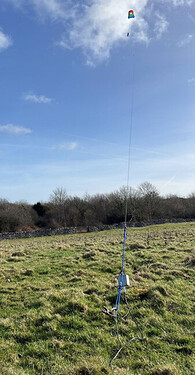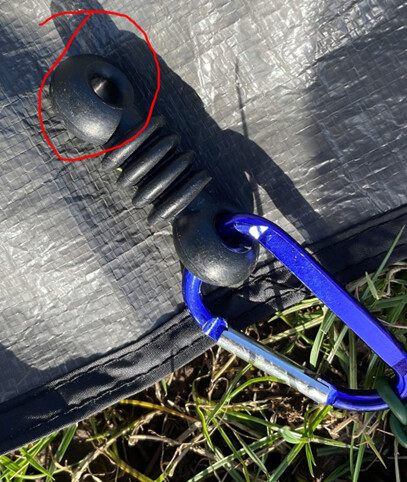Hi Andy,
Will be interested to know how you get on when you get round to trying it. Might be a good laugh to try & get a S2S contact between 2 kites but that’s probably one for the summer when the weather improves?
Answers to your questions/comments:-
No problems that I’ve encountered. At least not with the DX50. The wire that I used prior to the DX50 wasn’t quite as strong. I experienced a few issues there before I changed to the DX50.
According to the supplier, DX50 is expected to fail at around 130kg. Let’s say it should be safe up to around 110kg to give a margin of safety. Unless you are using a particularly big kite (like the type that Andy MM0FMF mentions in the above post), I suspect that you are unlikely to experience that much pull. The kite would probably tear apart before you get that far.
Having said that, the weak part in all my kite antenna systems…the part that has always given way on every occasion that I have had a failure…is either the knot on the antenna wire, or the attachment to the dog bone insulators.
I’ve never had a failure with the DX50 wire but as an aircraft engineer, I come from a background where there is always a backup.
The only time I ever went against that philosophy was on my first attempt. The wire snapped & I lost the kite. Not sure if you’ve seen that video but it was the first kite video in the playlist on my channel. Chasing it across the field on my bicycle (and ultimately failing to catch up with it as it disappeared over the horizon) wasn’t my finest hour!!!
After that experience I’ve always had a second safety line in there even though I’ve never needed it since, just in case something similar happens. Let’s call it a lesson learned!
That was my theory before I lost my first kite. Granted it had battens to stiffen it but it still relies on having tension to keep it inflated & maintain the aerofoil shape.
I thought without any tension on the lines it would collapse & fall to the ground. Unfortunately that wasn’t what happened.
The wind was still able to lift it into the air like a paper bag blowing around in the street, even without it maintaining it’s aerofoil shape.
Exactly that. I’d probably go for more than that if you can. Especially if the wind isn’t particularly strong.
From what I’ve read, the airflow will tend to be fairly smooth as it travels up the “upwind” side of a hill but will tend to break up and become turbulent as it travels over the top of the summit & even more so on the “downwind” side.
I have noticed that the kite is often a bit erratic at low levels (ie when I first launch it before it gets to altitude).
For this reason I always try to get the kite as high as I possibly can (within reason). Obviously limiting factors are how much space you have on the summit to lay out the line on the ground prior to launching (and also recovering it afterwards), CAA altitude limitations and also how far you are willing to walk when setting this up!
73





